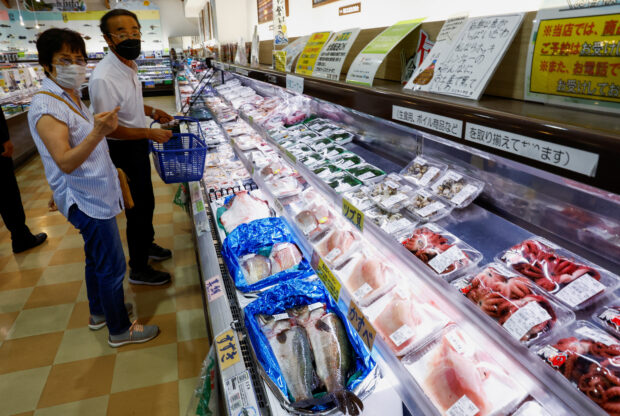
Customers browse through locally caught seafood at the Hamanoeki Fish Market and Food Court in Soma, Fukushima Prefecture, Japan, Aug 31, 2023. REUTERS/Kim Kyung-Hoon/File photo
TOKYO – Japan’s economy grew less than initially estimated in the second quarter as capital expenditure slid, revised government data showed on Friday, suggesting heightening overseas uncertainties are weighing on business confidence.
The data highlights the fragile nature of Japan’s economic recovery, as exports face headwinds from slumping Chinese demand and the fallout from aggressive U.S. interest rate hikes.
Japan’s gross domestic product (GDP) expanded an annualized 4.8 percent in April-June, against a preliminary estimate of 6 percent growth. That compared with a median market forecast for a revised 5.5 percent expansion.
The April-June expansion translates to a 1.2-percent quarter-on-quarter increase, data released by the Cabinet Office showed, against a preliminary reading of a 1.5- percent rise and economists’ forecast for a 1.3 percent increase.
Capital expenditure fell 1 percent in April-June from the previous quarter, compared with a preliminary flat reading, casting doubt on the central bank’s view that robust corporate spending will underpin Japan’s post-pandemic economy. The revised reading compared with a median market forecast for a 0.7 percent decline.
Private consumption, which makes up more than half of the economy, fell 0.6 percent quarter-on-quarter in the April-June period, compared with a preliminary 0.5 percent decline.
Exports remained solid for now with net external demand contributing 1.8 percent points to GDP growth, unchanged from the preliminary reading.
Japan’s economy has seen a delayed recovery from the COVID-19 pandemic’s scars this year, as rising living costs faltering global demand cloud the outlook.
Given such uncertainties, Bank of Japan policymakers have stressed their resolve to keep monetary policy ultra-loose until the recent cost-driven inflation turns into price rises driven by domestic demand and higher wage growth.